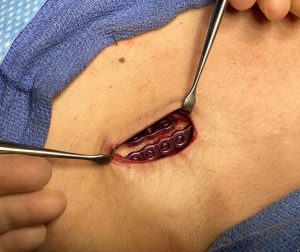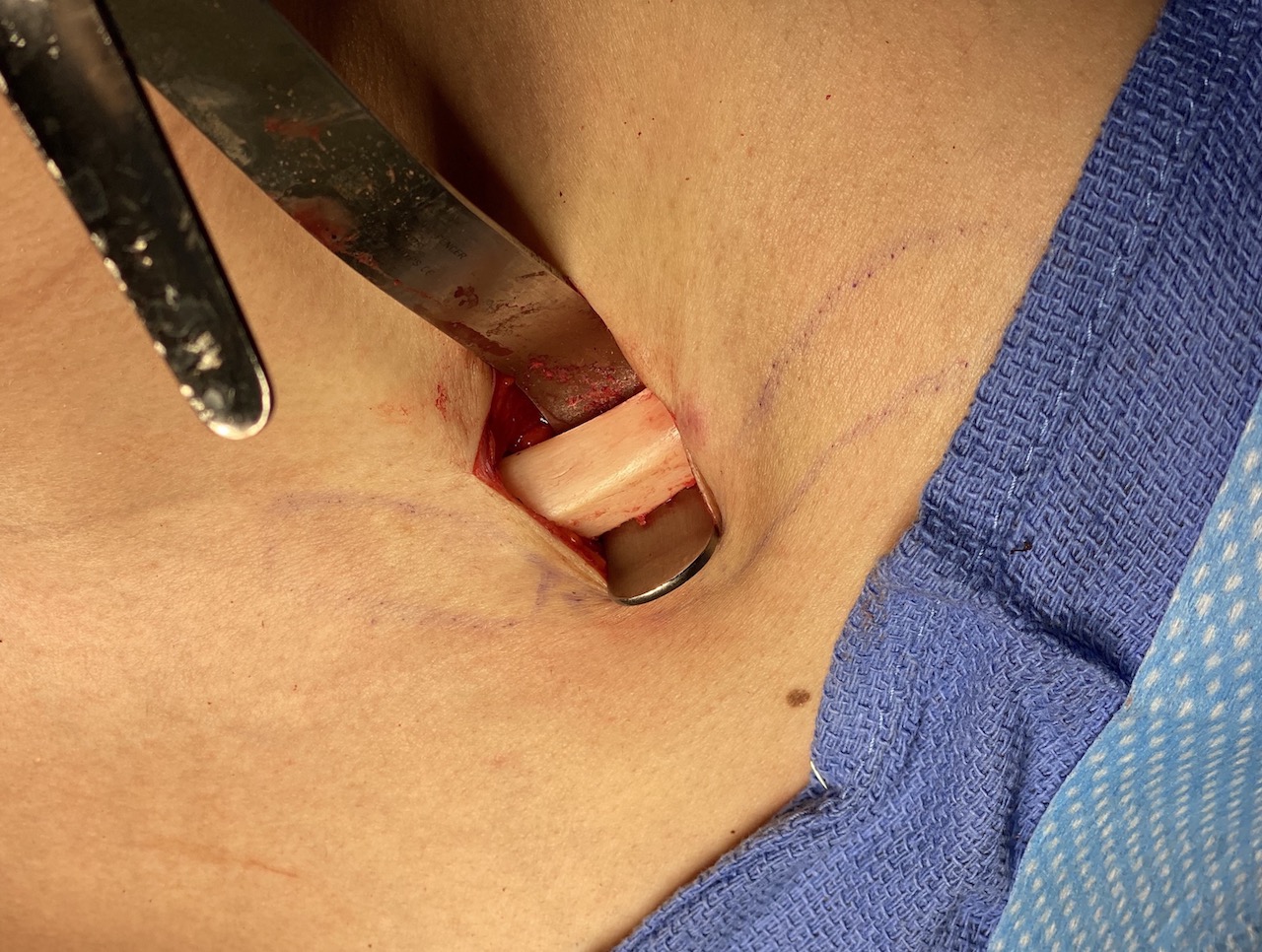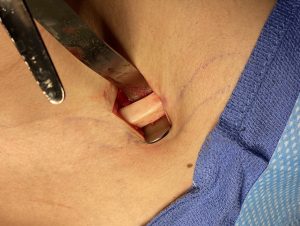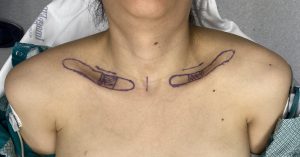Background: The success of shoulder width narrowing by clavicle reduction osteotomies depends on stable plate and screw fixation. Holding the bones in place until the body starts to knit the two cut ends together requires them to be held in stable proximity for the first month after surgery. Such fixation success depends on having a plate that will not fracture (is thick enough) and screws that will not back out of the bone when exposed to deformational forces. (bicortical screw engagement)
The typical shape of the clavicle is round or oval. It is a tubular bone with a naturally curved surface no matter what side of the bone one is on. When applying a fixation plate to a curved bone surface it is most ideal that the shape of the plate matches that of the bone to which it is applied. The more intimate contact the plate has to the bone the greater force distortions that are applied to it are dispersed. (improved osteotomy site stability) For this reason many clavicle fixation plates have a curved shape.
Clavicle osteotomy sites has some differences in fixation stability that most clavicle fractures. Such fractures are often spiral or comminuted in shape and have more complex fixation needs as a result. Conversely clavicle osteotomies represent the ideal ‘fracture’ site with two clean bone ends with good structural integrity. As a result more limited plates and number of screws needed are less than many more common clavicle fractures.
Case Study: This female desired shoulder width reduction with some disproportion between shoulder vs hip widths. She had a small body frame so her clavicle dimensions would be expected to have a small tubular bone shape.



A square-shaped clavicle is not a bone shape I have seen before. Clavicles are always tubular in form in my experience. From the anatomic perspective of ‘form follows function’ the evolution of four flat sides to this patient’s clavicles is unclear.
Case Highlights:
1) The shape of the clavicle is typically tubular or round.
2) In this patient the clavicle had a square shape with four flat sides.
3) The flat sides of a square-shaped clavicle provides favorable surfaces for the application of plate and screw fixation, particularly if it also has a flat surface.
Dr. Barry Eppley
Indianapolis, Indiana





